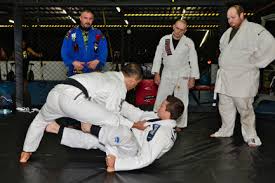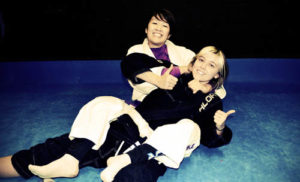Almost every week I am asked through email or PM advice on how to choose a good BJJ school for someone who has never trained. Rather than answer it over and over, I thought it would be a good idea to have a general go-to place where I cover it. So here we go:
Probably most people will start with a web search. With that as the beginning, I take a look first at a couple of things right off the bat.
- What belt/rank is the head instructor (or at least the person who will teach the bulk of the classes)? Belt ranks in BJJ still mean something, fortunately. The final arbiter of rank is how you perform on the mat, so it is difficult to lie about a belt for very long. In fact, there is almost a cottage industry of videos where a phony “instructor” is called out by a real BJJ practitioner. And there is a large gulf between belts, though not necessarily in terms of technique. Really, most white belts with at least two years of training know most of the techniques that black belts know. The difference is in what Rickson Gracie calls “invisible jiu-jitsu”, the little details that make the difference between occasional success and dominating the other guy on the mat. And in this day and age where BJJ is massively popular and has high ranking instructors everywhere, there is little reason to train at a gym that has less than a purple belt as the head person. And realistically, unless you live in a very small town, you should not settle for less than a black belt.
- Where did the instructor get his belt from, and does he still have a mentor relationship with that person? Every single legit BJJ gym owner is proud of his affiliation and where he comes from. If that is missing, that’s a red flag. There are people out there who are “Jiu-jitsu black belts” who have nothing to do with BJJ. They are from a Japanese lineage, or some modern eclectic version, but do everything in their power to hide that and let people think they are the same as that guy who got his Black Belt from a Gracie. If they don’t openly talk about where they got their knowledge, run away. BJJ has very narrow roots. Any legitimate instructor should be able to point to where his lay.
- Along with the lineage is the mentor relationship. BJJ is incredibly deep and complex. There is not one single person who knows it all. Not one. So everyone needs help and guidance and pointers. It may be a peer group that trains together, or it is a more senior, more experienced coach. But everyone needs someone. If they are not forthcoming about that, chances are they are phony or have a massive ego problem.
- Does the instructor compete? Note that I said nothing about how well he does. What is important is that he (or she) has no problem showing themselves at a large tournament around hundreds or even thousands of people who know what real BJJ looks like. If he is willing to be around his peers at a major tournament, then you don’t have to worry about if he is a phony. He may not be a world beater, but he is authentic.
- How does the language of the website sound? Are they trying to dazzle you with how tough they are? Or how awesome the coach is? Do they brag about their competition record but never mention how BJJ can help the average, everyday person? Or do they come across as someone who loves what they do and thinks it is possible for anyone and everyone to train in a healthy, welcoming environment?
Once you have decided that the gym is worth a look, go to the school and see for yourself. Take a look and talk to the instructor, but also be aware that most gyms will let you try a class or two for free. For example, at my gym, we let people take two. If it is only one, the class that day might be an anomaly. More than two is a waste. By the second class, you will get most of what you need to know to make a decision.
When you go to look, watch the makeup of the class. Unless it is a specific class (like a competition class, or a MMA training night) than ideally the class should be composed of all types of people – men, women, younger, older, etc. A class made up of young, athletic dudes is probably not the environment you want as a beginner. A class with all types represented tells you that the gym is open and welcoming to everyone and has no issues accommodating different people.
Pay attention to the “vibe” of the class. Do the students communicate freely with each other and the instructor, or is it a rigid, military type environment? While discipline is a requirement, it can be taken too far in martial arts. I want to see the students laugh and joke with each other. Yes, be focused and serious in their training, but there should be an obvious element of fun present. The same goes for the interaction with the instructor. He should be able to control the group without resorting to being a drill instructor. An instructor that jokes and smiles with students means he does not see himself as too elite and above the group.
Ignore talk about competition, unless that is all they talk about and seem to really push students to compete. For example, at my gym, we are known as a competition school, and yet probably less than 40% ever compete. It is not held against you if you choose not to. If they talk about it as part of the experience, that is fine. If you feel pressured to compete, I am against that very much.
Look at the gym itself. Are the mats scrupulously clean? That kind of attention to detail is important. I want the mats to be constantly taken care of. In a contact activity, where people are continuously touching each other, this is how you prevent infections and illnesses. Being lazy in this area is a really bad sign. For me, this also extends to the bathrooms.
There are plenty of things to look for, but most of the rest come from experiencing it on a regular basis in person. The above are what I would use to at least make the initial choice.
I hope you find this helpful. As always, I am free and open to answer questions. Thanks for reading!




